

                 



|
 World Music World Music 
|
Beyond Istanbul
Trikont |
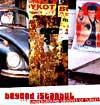  US-355 US-355
|
Turkey is the hinge between Europe and Asia, the bridge between Occident and Orient. The turkish female star DJ Ipek Ipekcioglu from Berlin offers a fascinating overview of moods, development and sounds of the Turkish underground of today.
Exciting dance beats between East and West.
|
Patchwork Europe
WERGO |
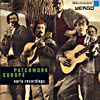  WERGO WERGO
|
Europe is not one sound but many!!!
‘Patchwork Europe’ presents the traditional music of the old continent in all its diversity: from Ireland to Majorca, from Sicily to Norway and from Portugal to Russia. From these 26 rare historic tracks, recorded between 1911 and 1954, a tremendous polyphony unfolds: a wonderful musical patchwork of styles and traditions.
“This is a delightful collection of scrubbed-up 78s, mostly from the 1920s and 30s. An accessible collection whose quality stays remarkably high throughout its 26 tracks.” Clive Bell, THE WIRE
|
Mestizo Music
Rebelion en America Latina - Latino Ska, Cumbia, Hip Hop, Salsamuffin |
  US-343 US-343
|
Latin Ska, Cumbia, Reggae, HipHop, Salsamuffin and Manguebeat from Argentina,Venezuela, Mexico & Brasilia. People in Latin America are fighting against injustice and destructive globalization in their countries – for freedom and autonomy.This is their music!
Latin America is changing. A breath of fresh air is pulling itself from the stranglehold of the 80’s Military juntas. But the joy over their political liberties only lasted briefly. Debt and financial crises seized the countries and threw them into disorder. First was Mexico in 1994, then Ecuador, Brazil, Uruguay and finally Argentina. Capital investors left with the last of the countries financial reserves. Millions of people were robbed and at the same time the old, unfair land distribution took away any possibility for the people to make a living, making survival almost impossible.The strength of people’s resistance begins to rise and over the continent people
unite to start movements, which oppose the dictation of the IWF and World Bank. They argue, fight and sing for a policy, which brings the interests of the people to the forefront. They take the first steps into taking fate into their own hands.
Tracklisting:
1. Panteon Rococo – La Carencia
2 Sargento Garcia – Acabar Mal
3. The Platform – No al ALCA
4. Karamelo Santo – La Piquadura
5. Coffee Makers – Las Calles de Medellin
6. Mundo livre s/a – CNFS
7. Em Marrocos - Do respeito surge a paz –
8. Las Manos de Filippi - Los metodos piqueter@s
9. La Papa Verde - La Paloma de la Paz –
10.Desechos - Que se vayan todos
11.Sargento Garcia - Revolution 2004
12.Un Kuartito – Ilusiones
13.Abuela Coca – El ritmo del barrio
14.Amparanoia – Somos Viento
15.Bellavista Social Club – Reclutame
16.Mundo livre s/a – Marcha contra o muro do..
17.Hino do Movimento Sem Terra - MST
|
Mzansi Music -
Young Urban South Africa
Various Artists |
  US 0316 US 0316
|
‘Mzansi music‘ (mzansi: slang for South Africa) is a tour through South Africa‘s vibrant urban music scene 10 years after the first democratic elections in the country. It started with Kwaito, but now ranges from Afrohouse to HipHop and spoken word poetry.
Artists include: Mapaputsi, Zola, Brown Dash, Bongomaffin, BOP, Revolution feat. Tabane, Mzekezeke feat. Brown, Skwatta Kamp, H2O, 340 ml feat. Tumi, Godessa, Ernie, Mandoza, Mafikizolo, H2O feat. ZubZ
|

Oriental Journey -
The Express Band and Guests |
  US 0329 US 0329
|
ORIENTAL JOURNEY is like a soundtrack to a road-movie: Heading East, direction sunset! The Express Brass Band - a group of more than 15 brass wind instruments and percussionists can be heard for the first time on record. On ORIENTAL JOURNEY they are joined by a wide variety of guests and together they make a wild caravan!
The music ranges from Soul, Jazz, African and East-European influences to Arabic influenced Dub, classical piano from Azerbaijan and Hungarian opera-singing. The many stages of the journey have been transformed into songs and although the destination keeps getting lost - to arrive is less important than the journey.
“Sounding at times like the Dirty Dozen Brass Band, at its best the orchestration and growling lead baritone sax lines have all the visceral energy of Charles Mingus‘ finest hour.”
Jonathan Walton, Songlines
|

Suburban Bucharest -
Mahala Sounds from Romania
Various Artists |
  0323 0323
|
SUBURBAN BUCHAREST unites magnificent voices and virtuoso fiddlers. It captures the old Lautari-Gypsy music of Romania. SUBURBAN BUCHAREST displays musical influences from Serbia, Turkey and the Middle East. The authorities see this music as polluting Romanian music and In the past few years, the improvised bars made of corrugated iron in the concrete-built suburbs of Bucharest have been torn down, taking with them the venues of most of the Gipsy Bands.
Bands included: Fanfare Ciocarlia, Romica Pureanu, Taraf de Haidouks, Maria Tanase, Dona Dumitru Siminica, Aurel & Victor Gore, Gabi Lunca, Faramitha Lambru, Rom Begale, Zavaidoc.
“An eye opener!”
“One of the best discs I‘ve heard in 2004 - in any genre.”
Simon Broughton, Songlines
“Another superb compilation from Trikont, this time showcasing the effervescent gypsy music of Romanian capital Bucharest, a city composed of "hundreds of sprawling villages that have grown together." Charismatic singers abound: Romica Puceanu (died in 1996) has the skills of an Ella Fitzgerald, while Maria Tanase (from the 1930s) was more of a Judy Garland figure, bringing night-club flair to folkloric material. The muted trumpet of Costel Vasilescu is a high point, spinning dizzily over a wildly swung Hora wedding dance, clanked out by cimbalom, fiddle and fluttering accordion. The tension between traditional sounds and modern pop is endlessly renegotiated - godfather of gypsy pop Dan Armeanca sings both with his coolly modern group and the pumping brass of Fanfare Ciocârlia. Finally there's the exuberant filigree of Taraf De Haidouks, a group ignored in Romania until international acclaim propelled them into surreal situations such as modelling for designer Yoji Yamamoto.”
|

Globalista
Various |
  US-0304 US-0304
|
The Trikont label was founded thirty years ago in Munich, on proceeds from the sale of Mao’s Little Red Book. Nowadays Trikont regularly releases the most intriguing and oddball compilations anywhere, and Globalista Import-Export is a cracker in time for Christmas. The theme is upbeat, commercial music from the Third World, massively popular at home but ignored abroad. Songs that duck below the radar of World Music, but shift huge numbers out of garish Import-Export shops like the one depicted on the sleeve.
This is the exhilarating sound of naked commercial ambition, allied to furious plundering of modern production, traditional styles, whatever works. In other words, these people are artists. Lebanese singer Dania fuses Arabic percussion to a guitar loop, and thanks to pan-Arabic satellite TV, has a hit in South America. Macaco come across like Jurassic Five from Barcelona, colliding ebullient HipHop into Flamenco guitars and show-off electric bass, and triumphantly getting away with it. La Rouge are a 17-piece hell-for-leather close harmony outfit, performing at the weekend to third generation Surinam kids in Amsterdam. And Leningrad are the Pogues on vodka, pumping out ska and encouraging Russian audiences to cry, “Am I a sex maniac?”
The rest is impassioned pop from Ivory Coast, Chile, Algeria, Mali, Turkey, Poland, Jamaica, France, Mexico and British Bhangra. There’s scarcely a weak track, though some of the best ones depart slightly from Globalista’s agenda. Cui Jian’s powerful fusion of rock guitar, HipHop and trad Chinese elements is banned in China, and his shows are restricted to unadvertised parties. His song about his plight, “Caged Bird”, is a tremendous, jangling pick-me-up. And Mohammed’s sizzling Islamic ragga is so far little known in his homeland, Senegal – before rapping his Koranic texts, Mohammed carefully gives out the phone number of his father, a marabout (Islamic scholar), for anyone seeking spiritual advice.
|

Global Acordion -
Early Recordings 1927 - 1948
Various Artists |
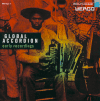  SM 1623 2 SM 1623 2
|
The accordion is the ultimate global instrument. As a catalyst of popular music it spread around the world in the 19th centruy like wildfire. 26 rare 78rpm recordings from Africa, Latin America, the US, the Caribbean and Europe (Austria, Germany, Switzerland, France, Sweden, Finland, England, Scotland, Ireland, Poland, Italy) display the enormous variety of early accordion styles. You will glimpse a wild folk music that hardly exists today. |

50 Years in Jazz
Coco Schumann |
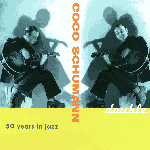  0238 -K 0238 -K
also available
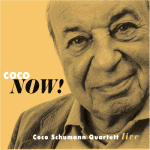
Coco Now!
CD-0226-E/U
|
From the underground of Berlin, to Theresienstadt, from Auschwitz to Australia, from the Berlin 'Red House' to the 'Ewigen Lampe' back to swing. A cross section through the life of the musician Coco Schumann. Coco Schumann, one that studied the high education of Jazz in Berlin of the late thirties, that gained experiences in improvising, submerging, surviving- one that's life was saved by music. Weather as first German electrical guitar player with the 'Helmut Zacharias Quartet' or at radio-pop-recordings, or with 'Leo Rosners Gipsy Band' in Australia or tomorrow in the 'Ewigen Lampe' in Berlin, he was and still is always distinguished by his unique feeling for the swing. One of the few still active Jazz musicians in Germany, that gained their first musical experiences in the thirties, is the guitar player Coco Schumann. Heinz Jakob Schumann was born in Berlin 1924 and as half Jewish he had to learn growing up really quick. His love for music helped him: In 1936 he already was infected by the 'Swing-Virus' and he still is not cured . 1936 in Berlin, that meant 'The Olympic Games', but also a little more freedom in the music for that what was called a little later 'Niggermusic'. Coco, as he was called soon, was at first only a 'fence guest' in the big dancehalls of those days, he for example listened to the big Swing-Idol Teddy Stauffer at the Delphi. But he was part of it soon, learned by playing, went through a unique school, a career, that would be almost impossible today. A crucial reason therefore was his special feeling for the swing. Exactly that feeling, that he is envied for, by many young guitar players. This was followed by the time of hidden and forbidden appearances in bars and basements in Berlin, and finally by denunciation, arrest and kidnapping to the concentration camps Theresienstadt, Auschwitz, Dachau. He only survived with the help of his music, weather as part of the 'Ghettoswingers' in Theresienstadt, or when he was forced to play the song 'La Paloma' for the twenties time in Auschwitz. For many years he wouldn't talk about these experiences, today he sees an obligation to fight against forgetting these times. After the war he reconnected with the Jazz-Scene, he played with Helmut Zacharias, became the first German musician with an electrical guitar, finally immigrated to Australia and then came back after a few years. Coco Schumann never categorised his music strictly and also had no problems with more common forms of music. That is how he accompanied the story of the German popular music, the recordings at some radio stations and also his own composing work. Whatever he does, weather he plays at Jazz-Concerts or in dancehalls he always stays faithful for his audience and himself: the music is the main thing, the feeling for the rhythm and for the moment.
|

HO!
Various |
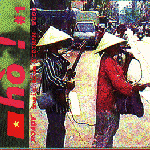  0249-E/U 0249-E/U
|
"In Vietnam the clash of civilisations has produced some curiously colourful hybrids. When traditional Asian music mixes with the sounds of the West, Vietpop emerges in a wild variety of styles. This compilation gathers together music from the streets of Saigon in its many forms, including buskers with electric guitars, megaphones and portable amps as well as some idiosyncratic adaptations of country & western. There are reminders of the colonial past with some extraordinary brass band music. Nothing is stranger than reality! "The best record I've heard in the last year!" Mike Gavin, Ray's Jazz Shop, London "One of the best new releases!"
Sabah Habas Mustapha, Folkroots
"A triumph of surreptitious guerilla recording techniques, this disc packs an outrageous amount of energy into its frenetic, whining, reverb-ridden ride. While many of the songs are inescapable to any casual Saigon tourist - indeed they follow you down the street - a rare catch here is of the bizarrely-blaring funeral combos: brass bands sounding like some New Orleans-Trash-Punk-Free Jazz. This and the ubiquitous 'Rider in the Sky' played on the electric monochord (the Theremin-esque dan bau) are ripe fodder for the students of Post-Colonialism or just a good time".
Philip Blackburn, SONGLINES
"Where transglobal cross pollinations used to be a side product of conquests and crusades, religious pilgrimages and silk and spice trading, aggressive US foreign policy has industrialised the process, restricting it to one-way exchanges at PX stores. American wars took rock'n'cola culture into deepest Indochina, but along with the terror, some good came out of it. Though the American presence in Saigon was cynical and corrupting, the bacillus culture forming around military bases developed disease-ridden freezones where local outsiders were permitted a precarious existence HÛ! Roady Music From Vietnam (Trikont US-0249) is a stunning document, celebration even, of Saigon's resilient streetlife 20 years after the US's defeat. The appeal of American pop, most likely heard leaking out of squalid girlie bars, is evident in its impact on these electric guitar wielding grannie buskers with backpack amps, bar singers, Vietblues players, hustlers, funeral drum'n'bass combos and bizarre US folk-ethnic fusioneers, taped amid screeching traffic noise, cop whistles, barking hawkers and insect-buzzing heat. Just as the jungle reclaimed detritus left behind by GIs, so these musicians have remoulded fading American melodies around Vietnamese templates, transforming them into vivid, shocking pink Vietpop and street music. And these slithering brass tunings and clattering percussion of Saigon's funeral combos are truly worth dying for".
|

Schrammein
Various |
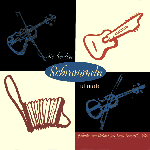  0223-E/U 0223-E/U
|
"Schrammelmusik" is addictive. It's like oil in the veins. Only two violins, a button accordion and a contraguitar is needed, but they must play the old dances: not the watered down stuff offered to busloads of tourists every day in the noisy wine bars of Grinzing. Good music doesn't prostitute itself. Good music must be searched for. It can only grow in silence. The soaring notes of the violins, which are soft and gentle even in the highest register, mingle with the velvet harmonies of the squeeze-box and with the dry bass of the contraguitar, a Viennese specially with two necks. Originally the accordion part was played by a small clarinet but by the late nineteenth century this was already a rarity. In 1878 two classically trained violin players. The Schrammel brothers, being short of money, founded a trio with guitarist Anton Strohmayer called "Die Nudorfer" after the suburb of Vienna where they performed. Following their success many similar bands formed and taverns (Heurigen) where the local wine was drunk became their venues. Despite its origins in rural dance music "Schrammelmusik" was never danced to. It was the opposite: the audience came only to sit and listen.
Artists include
Lanner-Quartett, Strohmayer-Quartett, Trocadero-Ensemble, Waldschnepfen-Terzett, Schrammelquartett Pepi Wichart, Maxim-Quartett, Original Wiener Trio, Wiener Piccolo-Duett, Zither-Quartett, Rupp-Krause, Quartett Lenz, Neuwirth Extremschrammeln, Soul Music of old Vienna
|

Finnischer Tango
Various |
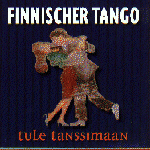 Finnish Tango Finnish Tango
US-0250
|
In Finland people don't want to believe that the tango was created in Argentina. Even film director Aki Kaurismaki says it's a Finnish invention, and true or false, it has become the national music of Finland. The Nordic version is played differently from its Latin relative; the syncopation has gone, it is played in a minor key and the accordion has replaced the bandoneon. The eroticism of the dancing couples has melancholic. The CD contains a comprehensive collection of unique Finnish tango recordings from 1915 to the present day. It includes rare historical 78s as well as songs influenced by musical fashions such as rock 'n' roll and pop. It proves that the tango can change without losing any of its soul.
Artists include:
Georg MalmstËn, Harmony Sisters, Olavi Virta, Henry Theel, Reijo Taipale, Markus Allan, Arja Saijonmaa, M. A. Numminen, Rauli Badding Somerjoki, Topi Sorsakoski & Agents
"The same Bavarian label is responsible for Finnischer Tango (Trikont US 0250CD), which charts the dance's transmigration from Buenos Aires to Helsinki, via Paris. Taxing root as early as 1915 the Argentine hothouse flower proved hardy enough to make the transition to the cold northern climate, where the tango's tightly lashed Latin passions have metamorphosed into the softer, rose-clenching formalities that preserve Finnish decorum, no matter how deep vodka-sluked emotions run. Spanning 1915 to 1998, with the war years also represented, the compilation makes a legitimate bid for the tango's transformation into Finnish blues. Exchange is a two way business. The Argentinians gave Europe the tango, and for that we give them the pleasures of electro acoustic music. Arriving amid rumours of a long standing but secretive German-influenced experimental Electronica scene lurking in the shadows of Buenos Aires."
"The disc provides a fascinating overview of the history of Finnish tango as the recordings span the century, from 1934 to 1998 with one from 1915. Stephen Meier's excellent notes are beautifully produced and offer a vivid history of the genre, each of the 24 tangos and their singers. Superb."
|
| For further information, ring 01422 842212 and ask for Christoph Wagner.
If you would like to be kept informed about new releases or receive a comprehensive catalogue, email us at info@klang-records.co.uk
|
|
|